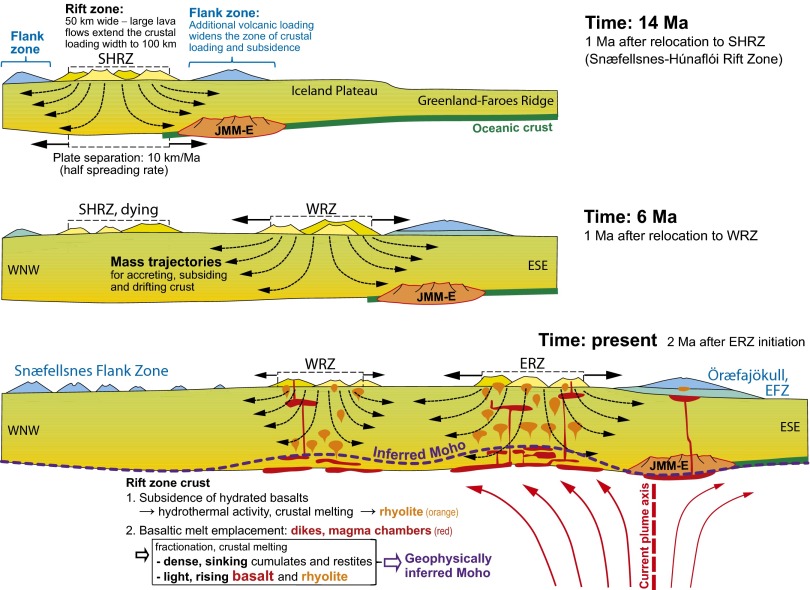Fig. 9.
Simplified and schematic west-northwest–east-southeast–trending cross-sections through the Icelandic crust, demonstrating the mechanism of successive cycles of deep burial of continental slivers of the extended Jan Mayen Microcontinent (JMM-E). The cross-sections are not drawn to exact scale. The location of the lower section through the plume axis is shown in Fig. 2A. The observations that older lava piles west and east of the rift zones strike parallel to and dip gently toward the nearest rift zone (38, 70), indicate continuous subsidence resulting from extensive volcanic loading of the rift zone and immediately surrounding crust. The volcanic activity in the flank zones produces additional loading and crustal burial 50–100 km outside the rift zones, which have jumped eastward every 5–9 My, at about 24, 15, 7, and 2 Ma (39), in response to the westward migration of the northeast Atlantic plate boundary relative to the plume axis. The JMM-E, positioned east of the plume at 27 Ma (Fig. 7F), could therefore remain within about 70 km of the nearest rift zone margin until today. The three sections depict the rift zone configurations and state of the JMM-E burial at 14, 6, and 0 Ma. The rate of burial is highest when the JMM-E is close to the rift zone margins, within the first 2–3 My of rift zone relocation. The current plume axis (25), plume flow pattern, and inferred Moho (Fig. 2B and ref. 46) are shown in the lower panel (present), which also indicates how the magmatic processes under the rift zones produce intracrustal segregation of light, rising melts from dense, sinking cumulates and restites. This may cause the observed shallowing of the Moho under the rift zones (46). EFZ, Eastern Flank Zone; WRZ, ERZ, and SHRZ: Western, Eastern, and Snæfellsnes-Húnaflói Rift Zone.

